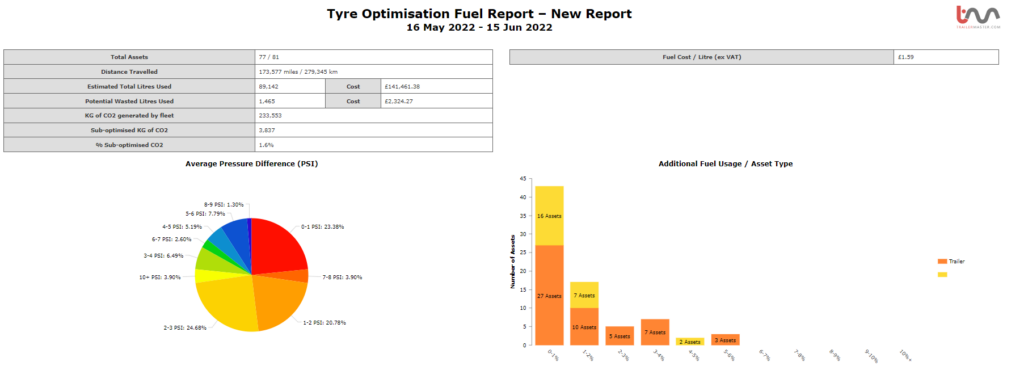As mentioned in Transport Engineer, reports from Goodyear clearly reveal that the transportation industry is moving towards a greener future with 61% of fleet operations in the UK having sustainability objectives in place, reducing fuel usage being one such way. And with fuel prices continuing to rise, reducing fuel use also reduces fuel costs so it makes sense for fleet operators to know how this can be done.
Approximately 20-35% of lorries fuel consumption is down to the rolling resistance of its tyres. If the rolling resistance is kept as low as possible fleet operators can reduce the amount of fuel used which has a positive impact on their carbon emissions and fuel costs.
Maintaining correct pressure is crucial to ensuring the optimal rolling resistance of tyres. A perfectly inflated tyre will distribute the vehicle’s weight efficiently, ensuring even wear across the whole tyre. An underinflated tyre will sag at each side, causing the rolling resistance to be increased. Because more energy is required to overcome the rolling resistance, more fuel is used. The tread will also wear down quickly, meaning that they are more expensive and less sustainable to run, and will need to be replaced sooner than those that are properly maintained.
Checking tyre pressure can be overlooked, purely due to the time it takes. However there is a solution.
TPMS by Axscend uses sensors to continually monitor the tyre pressures of the assets in your fleet. It sends alerts if the pressure in any trailer tyre drops below a pre-defined threshold. Green indicates tyres are OK, amber means there’s an issue to check, and red which is critical and requires immediate attention.
Being aware of tyre pressure problems before they become serious allows you to take action quickly before it results in downtime, or risks the safety of the driver and other road users. The added bonus is that it that you will use less fuel, which reduces both carbon emissions and fleet fuel spend.
To book a demo call 01303 842103 or book online
